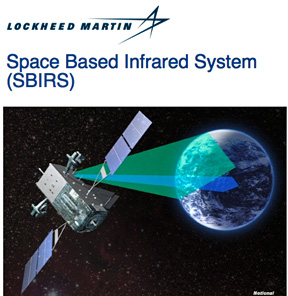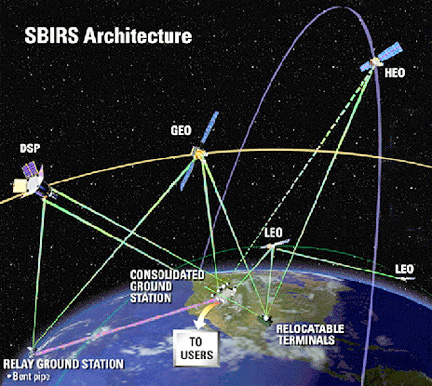 [SatNews] Lockheed Martin [NYSE: LMT] has delivered the third of four highly Elliptical Earth Orbit (HEO) satellite payloads contracted by the U.S. Air Force as part of the Space Based Infrared System (SBIRS). The SBIRS program delivers timely, reliable and accurate missile warning and infrared surveillance information to the President of the United States, the Secretary of Defense, combatant commanders, the intelligence community and other key decision makers. The system enhances global missile launch detection capability, supports the nation's ballistic missile defense system, expands the country’s technical intelligence gathering capacity and bolsters situational awareness for warfighters on the battlefield. The SBIRS architecture includes a resilient mix of satellites in geosynchronous earth orbit (GEO), hosted payloads in HEO orbit, and ground hardware and software. The integrated system supports multiple missions simultaneously, while providing robust performance with global, persistent coverage.
[SatNews] Lockheed Martin [NYSE: LMT] has delivered the third of four highly Elliptical Earth Orbit (HEO) satellite payloads contracted by the U.S. Air Force as part of the Space Based Infrared System (SBIRS). The SBIRS program delivers timely, reliable and accurate missile warning and infrared surveillance information to the President of the United States, the Secretary of Defense, combatant commanders, the intelligence community and other key decision makers. The system enhances global missile launch detection capability, supports the nation's ballistic missile defense system, expands the country’s technical intelligence gathering capacity and bolsters situational awareness for warfighters on the battlefield. The SBIRS architecture includes a resilient mix of satellites in geosynchronous earth orbit (GEO), hosted payloads in HEO orbit, and ground hardware and software. The integrated system supports multiple missions simultaneously, while providing robust performance with global, persistent coverage.

Illustration of the SBIRs architecture, courtesy of the U.S.A.F.
Lockheed Martin’s SBIRS contracts include four HEO payloads, four GEO satellites, and ground assets to receive, process, and disseminate the infrared mission data. The first two HEO payloads were delivered in 2004 and 2005 and have provided mission performance surpassing specifications. Prior to its delivery, the HEO 3 payload successfully completed rigorous environmental and functional testing to demonstrate performance in family with HEOs 1 and 2.
“This is the third SBIRS HEO payload delivery and the first from the SBIRS Follow On Production Program (SFP),” said Steve Toner, vice president of Northrop Grumman’s Military and Civil Space business unit. “Its sensor will enhance the high quality of information being provided to our warfighters by the SBIRS constellation.”
On May 17, Air Force Space Command declared GEO 1 operational and recommended Integrated Tactical Warning and Attack Assessment (ITW/AA) certification of the asset to USSTRATCOM. On March 19, the Air Force’s second SBIRS GEO satellite (GEO 2) was successfully launched and has been delivering outstanding infrared data as part of on-orbit testing. Earlier that month Lockheed Martin received contracts to procure long-lead items for GEOs 5 and 6. The SBIRS team is led by the Infrared Space Systems Directorate at the U.S. Air Force Space and Missile Systems Center. Lockheed Martin is the SBIRS prime contractor, Northrop Grumman is the payload integrator. Air Force Space Command operates the SBIRS system.

